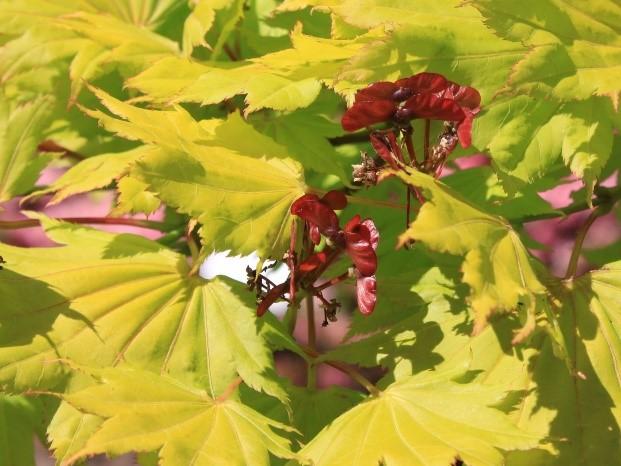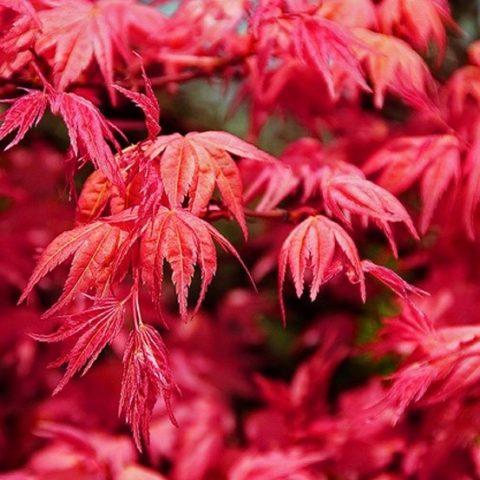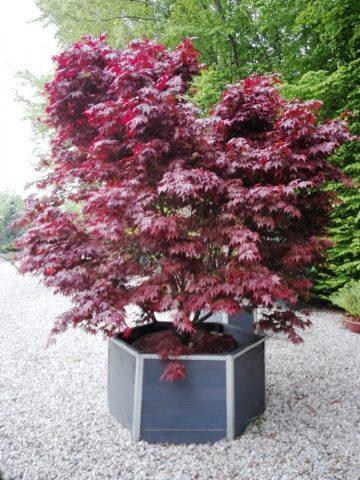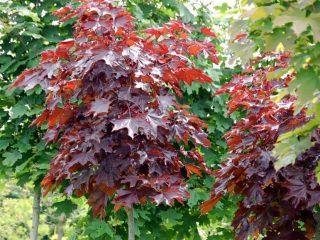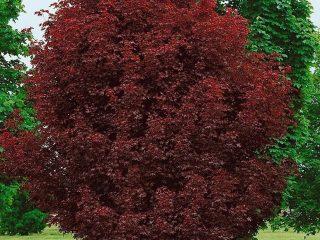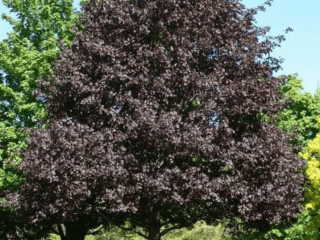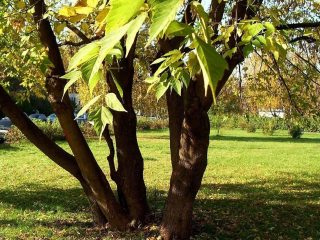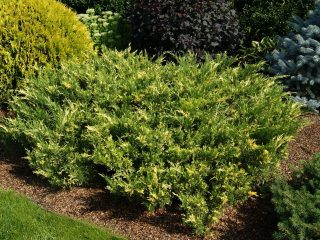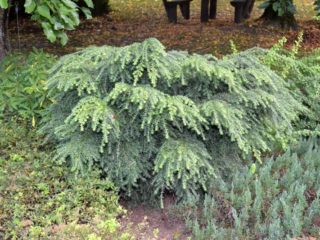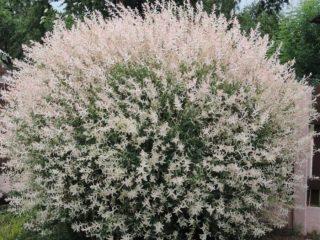Content
The Japanese maple fascinates both experienced gardeners and beginners with its appearance. An extraordinary feature of the tree is its crown, whose shade attracts all attention. A wide variety of varieties allows you to choose the ideal option for your site. But the Japanese maple grows most aesthetically where the gardener knows the peculiarities of growing the crop.
Description of Japanese maple
Under this name, not one tree is “hidden”, but several varieties, originating from Japan and South Korea. Externally, the crop looks like a deciduous tree.
Its shoots are reddish-gray and smooth to the touch. But its leaves attract special attention. They are round in shape, with serrated edges. The leaves are arranged oppositely and have a slight edge on one side. They can reach 15 cm in diameter. The leaf is especially beautiful when cut into half its diameter. The length of the petiole can reach 5 cm.

In summer, Japanese maple is green in color, in autumn it is rich carmine or poisonous scarlet with crimson or yellow splashes.
The flowers of the tree are formed in the form of long drooping shields with pubescence. They can reach 3 cm in length. You can admire the flowers of the Japanese maple from April to June. They are violet-red or light green-yellow in color, depending on the variety.
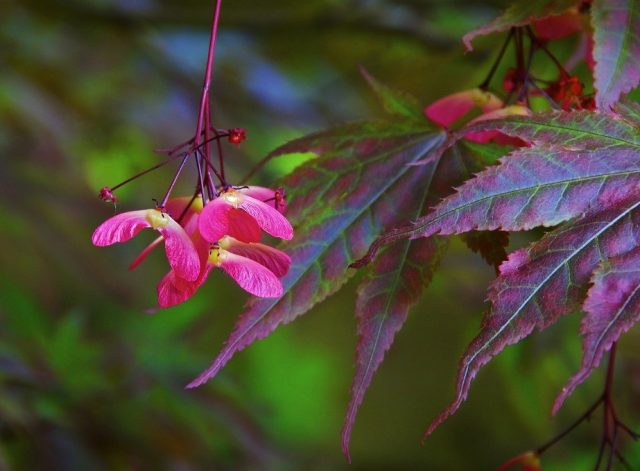
Japanese maple fruits remain on the tree throughout the growing season
Winter hardiness of Japanese maple
These trees belong to the fifth climate zone. Japanese maples can also survive in the Moscow region, where temperatures in winter drop to -23-29 °C. Various varieties can safely withstand even stronger cooling of the air if they are provided with winter shelter.
Height of Japanese maple
In its natural habitat, Japanese maple is not tall. In landscape designs, experts have also found use for low-growing varieties that grow no more than 1.5 m. There are also giants in gardens, whose size reaches 10 m.
Where does Japanese maple grow in Russia?
The natural habitat of the tree is mixed forests on mountain slopes. On the territory of the Russian Federation in nature it can be found only in one place: in the South Kuril region of the Sakhalin region. The number of trees is so low that Japanese maple is listed in the Red Book.
Varieties of Japanese maple
Due to its appearance, the tree has gained immense popularity among gardeners. And recently, not only through the efforts of breeders, but also amateurs, many subspecies of the tree have appeared. The variety of varieties allows the owner to choose the ideal plant for the site.
There are only three main types:
- Japanese fan maple or palm leaf maple (Palmatum);
- Shirasawa (Shirasawanum);
- Japanese (Japonicum).
All other representatives are different varieties that have characteristic common features and unique differences.
The most popular varieties:
- Shirasawanum Aureum is one of the best representatives of its species. The tree can reach a height of 3-4.5 m. The crown is dense, with thin shoots. The leaf blades are golden-green and palmate. In autumn they turn orange or reddish.
The flowers of the Japanese maple Shirasawa Aureum are dark purple with a red tint.
- Beni-maiko (Beni-maiko) pleases when blooming with fascinating leaves of bright red color. Gradually their shade becomes lighter: reddish-pink, and in the summer they are completely green. By autumn, the Japanese red maple once again regains its bright colors, in which orange predominates. The tree itself is very compact: adult specimens reach 1.2-1.8 m.
In Japanese, Beni-maiko means “red-haired dancing girl.”
- Bloodgood is more like a tree-like shrub with a spherical crown. The shoots have pinnate leaves with 5-7 lobes, whose shade varies from dark purple to almost black-red.
Flowers of the Bloodgood variety appear in June and are decorative lionfish
How to grow Japanese maple
The natural habitat of the crop is a warm eastern climate, so in regions with low temperatures and cold winters, growing Japanese maple outside the home is problematic. As a solution to the problem, you can use covering material, mulch. Dwarf varieties are grown mainly in pots so that the tree can be hidden in a warm room for the winter.
The tree is also demanding on the composition of the soil. It needs fertile and nutritious soil. Japanese maple looks worst in areas where alkaline soil predominates.
Purchasing a seedling is very problematic. The main method of planting is seeds. To get a tree, a gardener will have to start with seedlings.
Work algorithm:
- Soak the seeds in a growth stimulator for 1-2 hours.
- Prepare containers measuring 10*10 cm.
- Make a 4-5 cm depression in the fertile soil and place the seed in it.
- Sprinkle the plantings with soil, cover the tops of the containers with film, and put them in a warm place.
- When the first leaves appear, transfer the young plant to a spacious pot.
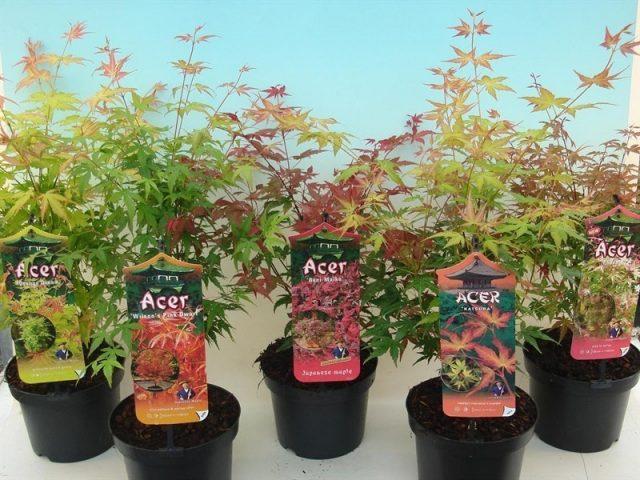
In the store, purchase a Japanese maple seedling only with a closed root system and a healthy appearance.
It is recommended to root a young tree according to the following rules:
- Dig a hole so that its dimensions are twice the size of the maple roots in height and width.
- Place drainage and a layer of sand at the bottom.
- Transfer the seedling from the pot so that the whole lump of earth is preserved as much as possible.
- Spread the roots, cover with a mixture of soil, compost and humus.
- Compact the soil around the tree trunk and mulch it.
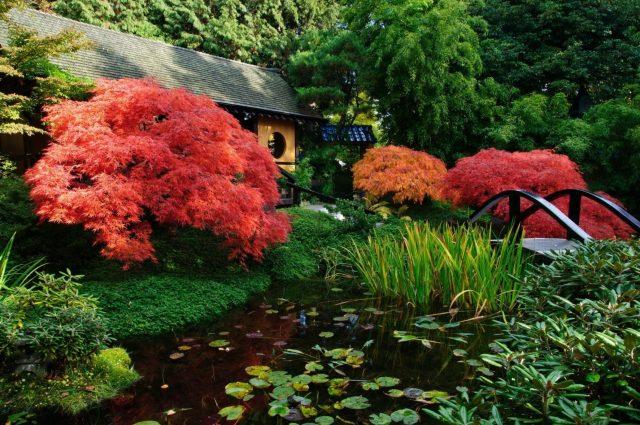
In a garden plot, Japanese maples are best placed at a distance of 2-3 m from each other.
Caring for Japanese Maple
One of the most important factors is watering. The soil should not dry out, but excessive moisture will cause harm. During particularly dry months, it is recommended to additionally irrigate the tree crown.
Formative pruning is mandatory within 2-3 years. In the future, as it grows, it is enough to remove frozen shoots. After the snow melts and until mid-July, Japanese maple needs complex fertilizing that does not contain nitrogen.
Reproduction of Japanese maple
At the moment, there are two ways to increase the number of trees on your site: seeds and cuttings. The latter method is extremely unreliable: the risk of shoot survival is low.
Cutting algorithm:
- Select healthy, non-lignified branches in the spring.
- Make circular cuts at their base for the future root system.
- Repeat the cutting procedure 2-3 cm higher.
- Between the notches, remove the young bark and apply root-forming hormone to the bare area.
- Wrap the treated area with damp moss. And fix polyethylene on top of it.
- Store the cutting in a cool, shaded place until roots appear. Most often, this period takes 3-4 weeks.
- Remove the bandage and plant the cuttings in open ground. By autumn, the Japanese maple will get stronger, but for the winter the young tree will need to be provided with good protection.
Diseases and pests
Insects are indifferent to ornamental crops. The only pest that shows interest is the gall mite. As a result of its activity, the leaves lose color and the branches dry out.
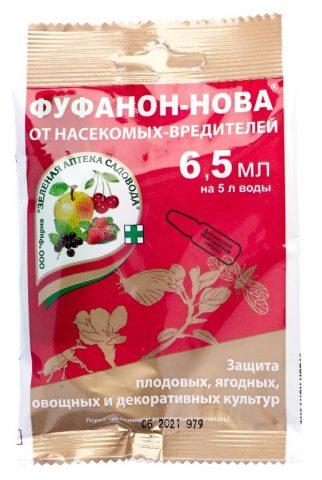
The best protection against gall mites is to treat the tree with the insecticide Fufanon
Conclusion
Japanese maple is one of the most ornamental plants nowadays. The tree decorates the garden from early spring to late autumn, immediately attracts attention, and helps to distinguish the area from others. It is not afraid of diseases or pests. When purchasing seeds or seedlings, you need to take into account the region, climate and personal capabilities of the gardener.
Reviews of Japanese maple
